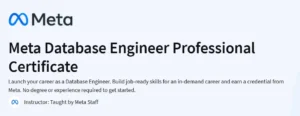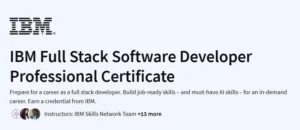What will you learn in Beginner’s Guide to Terraform Course
Understand infrastructure as code (IaC) principles and Terraform’s architecture
Write and organize Terraform configurations using HCL (HashiCorp Configuration Language)
Manage providers, resources, variables, outputs, and state files effectively
Implement modules for reusable infrastructure components and follow best practices
Plan, apply, and destroy infrastructure safely with Terraform CLI and remote backends
Program Overview
Module 1: Introduction to Terraform & IaC
⏳ 1 week
Topics: IaC benefits, Terraform vs. other tools, installation, CLI basics
Hands-on: Install Terraform, initialize a directory, and run
terraform init
Module 2: Writing Your First Configuration
⏳ 1 week
Topics: HCL syntax, declaring providers and resources, basic resource attributes
Hands-on: Create an AWS EC2 instance and output its public IP
Module 3: Variables, Outputs & State Management
⏳ 1 week
Topics: Input variables (types, defaults), outputs for consumption, local vs. remote state, locking
Hands-on: Parameterize your EC2 configuration and store state in an S3 backend
Module 4: Resource Dependencies & Provisioners
⏳ 1 week
Topics: Implicit vs. explicit dependencies,
depends_on, local and remote provisionersHands-on: Deploy a web server on EC2 and configure it using a
remote-execprovisioner
Module 5: Modules & Code Organization
⏳ 1 week
Topics: Creating and using modules, registry modules, versioning, input/output maps
Hands-on: Build a VPC module and reuse it across multiple environments
Module 6: Terraform Workspaces & Environment Management
⏳ 1 week
Topics: Workspaces for isolation, naming strategies, managing multiple environments
Hands-on: Create separate
devandprodworkspaces and deploy different configurations
Module 7: Terraform Best Practices & Testing
⏳ 1 week
Topics: Code formatting, linting (terraform fmt, validate), security scanning, Terratest basics
Hands-on: Validate configurations, run
terraform fmt, and write a simple Go test
Module 8: Collaboration & CI/CD Integration
⏳ 1 week
Topics: Remote state locking, Terraform Cloud/Enterprise, integrating with GitHub Actions or Jenkins
Hands-on: Set up a GitHub Actions pipeline to plan and apply on merge to
main
Get certificate
Job Outlook
Terraform skills are in high demand for DevOps Engineer, Cloud Engineer, and Infrastructure Engineer roles
Widely used by organizations adopting multi-cloud strategies and automated infrastructure
Salaries range from $95,000 to $150,000+ depending on region and experience
Proficiency with Terraform accelerates career growth in SRE, platform engineering, and site reliability
Specification: Beginner’s Guide to Terraform Course
|
FAQs
- Basic understanding of cloud concepts (like AWS, Azure, or GCP) is helpful but not mandatory.
- No prior DevOps or infrastructure-as-code experience is required.
- The course introduces Terraform fundamentals from scratch.
- Familiarity with command-line interfaces (CLI) can be useful.
- Hands-on examples make it easier for beginners to start managing infrastructure.
- Yes, Terraform supports multiple cloud providers via providers and modules.
- The course demonstrates core Terraform concepts applicable across clouds.
- You can manage resources on AWS, Azure, GCP, or other supported platforms.
- Skills gained allow you to adapt code for different environments easily.
- Understanding modules and state management is key to multi-cloud deployments.
- The course focuses primarily on Terraform fundamentals.
- Basic module usage and simple configuration management are introduced.
- Advanced topics like complex module hierarchies, workspaces, and remote state may require additional learning.
- Core concepts enable learners to extend to advanced features independently.
- Emphasis is on practical hands-on experience with resources and provisioning.
- Yes, Terraform helps automate resource provisioning that would otherwise be manual.
- Learning infrastructure-as-code improves efficiency and reduces human error.
- Course examples demonstrate provisioning, updating, and destroying resources programmatically.
- Skills can be applied to automate existing cloud setups.
- Understanding Terraform syntax and state management is crucial for smooth transitions.
- The course includes step-by-step exercises to create and manage cloud resources.
- Students practice defining configurations, initializing projects, and applying changes.
- Hands-on tasks cover resource creation, updates, and deletions safely.
- Exercises reinforce Terraform syntax, providers, and state file management.
- Additional practice outside the course is recommended to build confidence and mastery.





